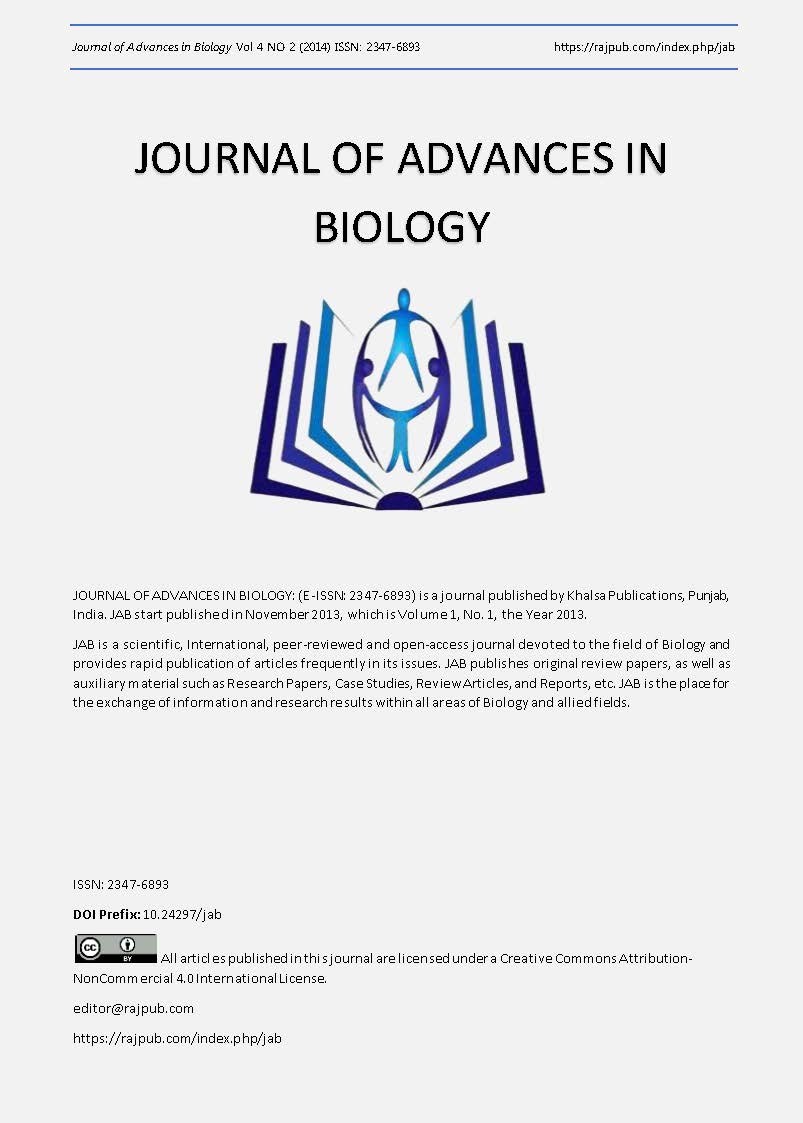Deterioration in the Biodiversity of Copepods in Sewage Laiden Creeks of Mumbai Coast, West Coast of India;a Statistical Approach
DOI:
https://doi.org/10.24297/jab.v4i2.5581Keywords:
copepods, reduction, biodiversity, creek, degradation.Abstract
The coastal waters of Mumbai is known to receive copious amount of waste from the adjacent creeks and bays. Effluents from various industries including nuclear and thermal power stations are discharged into the Mumbai harbour- Thane creek confluence. The water quality has been reported to be deteriorating which may have adverse effect on the fauna especially zooplankton - the subtle community. Copepods contribute about 70-90% of the total zooplankton in the marine ecosystems. Major portion of the waste generated in the city is discharged into the Arabian Sea through creeks creating pockets of localized pollution. The Mumbai harbour – Thane creek system receives more than 180 million liters per day (mLd) of industrial waste. The projected daily domestic waste water flow for greater Mumbai for 1985 and 2005 are respectively 1350 and 2000 mLd. Water samples and zooplankton were collected from two creeks namely Bassein and Thane and also in Versova and Mahim, two stations along the coastal region. Nutrients were high during pre-monsoon. PO4, 42.0 µ at.l-1 and NO3, 43.0 µ at.l-1 being the highest values recorded. The suspended load in the creeks were high namely 87.5 mg.l-1 during pre-monsoon and 121 mg. l-1 during post-monsoon. At Bassein creek the zooplankton density ranged from 74 to 21435 no.(100m3) -1 and copepods, from 9 to 15698 no.(100m3) -1. At Thane zooplankton population was high and ranged between 228 and 69259 no.(100m3)-1 and copepods from 7 to 57484 no.(100m3) -1. In a study made a decade earlier, 68 species were observed in Versova- Mahim environment and 49 species in the Thane creek. In the coastal stations, nutrients and suspended load were comparatively low and ammonia relatively high. The upper reaches of the creeks sustained high nutrients and suspended load and low density of zooplankton and in some stations‘ upstream, the percentage of copepods was very low where other zooplankton dominated. Rare and abundant species‘ clusters were formed separately highlighting the significance of the environment on the copepod distribution in the two creeks. The biological parameters along with water quality could uniquely discriminate the two creeks and also the coastal stations in the Versova and Mahim more precisely during postmonsoon season than premonsoon season. Species diversity was high in the coastal stations away from the mouth of the creeks and was composed of estuarine, neritic and oceanic species. In the Bassein creek suspended load, DO and phosphate during pre monsoon, with DO replaced with salinity during post monsoon contributed to the total zooplankton abundance. Temperature, Salinity and Phosphate played a significant role during premonsoon season whereas temperature, pH and suspended load contributed to the abundance of zooplankton during postmonsoon (P<0.05, V.E.>82.13%) season in the Thane creek. This study showed a marked decrease in density and total number of species recorded from the localities. The reduction in diversity is more pronounced in the upstream stations where low dissolved oxygen (DO) and heavy concentrations of nitrates, ammonia and phosphates was observed. The hydrographical features point to habitat degradation due to waste input, both anthropogenic and industrial.
Downloads
Downloads
Published
How to Cite
Issue
Section
License
 All articles published in Journal of Advances in Linguistics are licensed under a Creative Commons Attribution 4.0 International License.
All articles published in Journal of Advances in Linguistics are licensed under a Creative Commons Attribution 4.0 International License.




